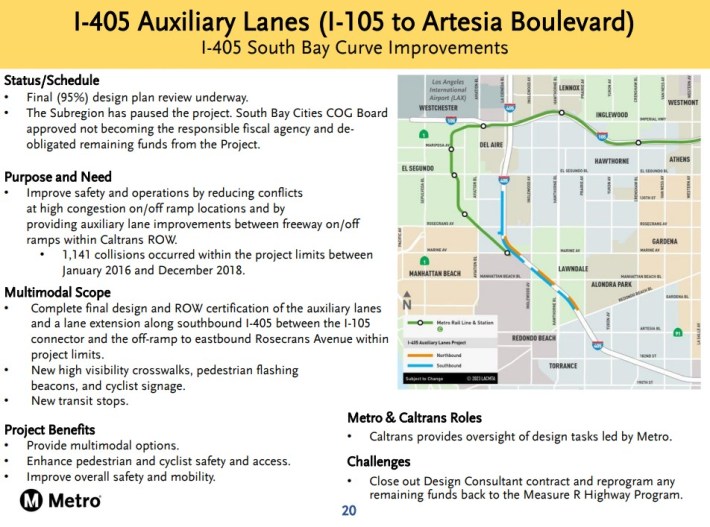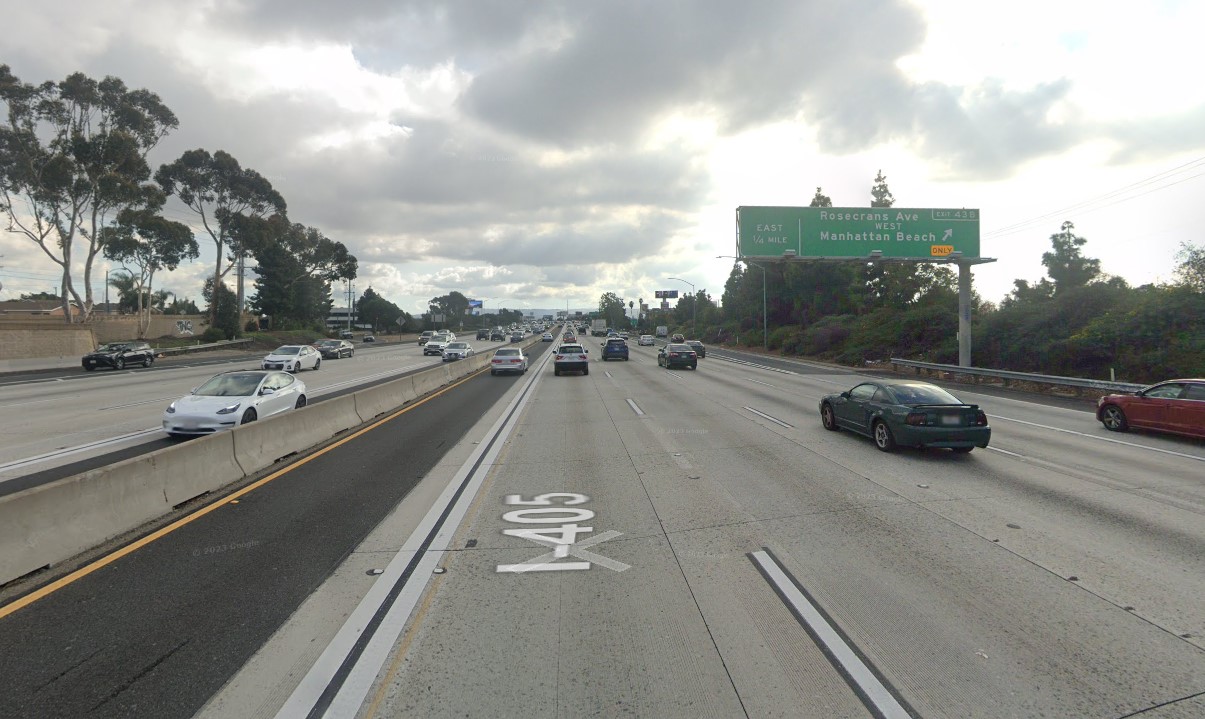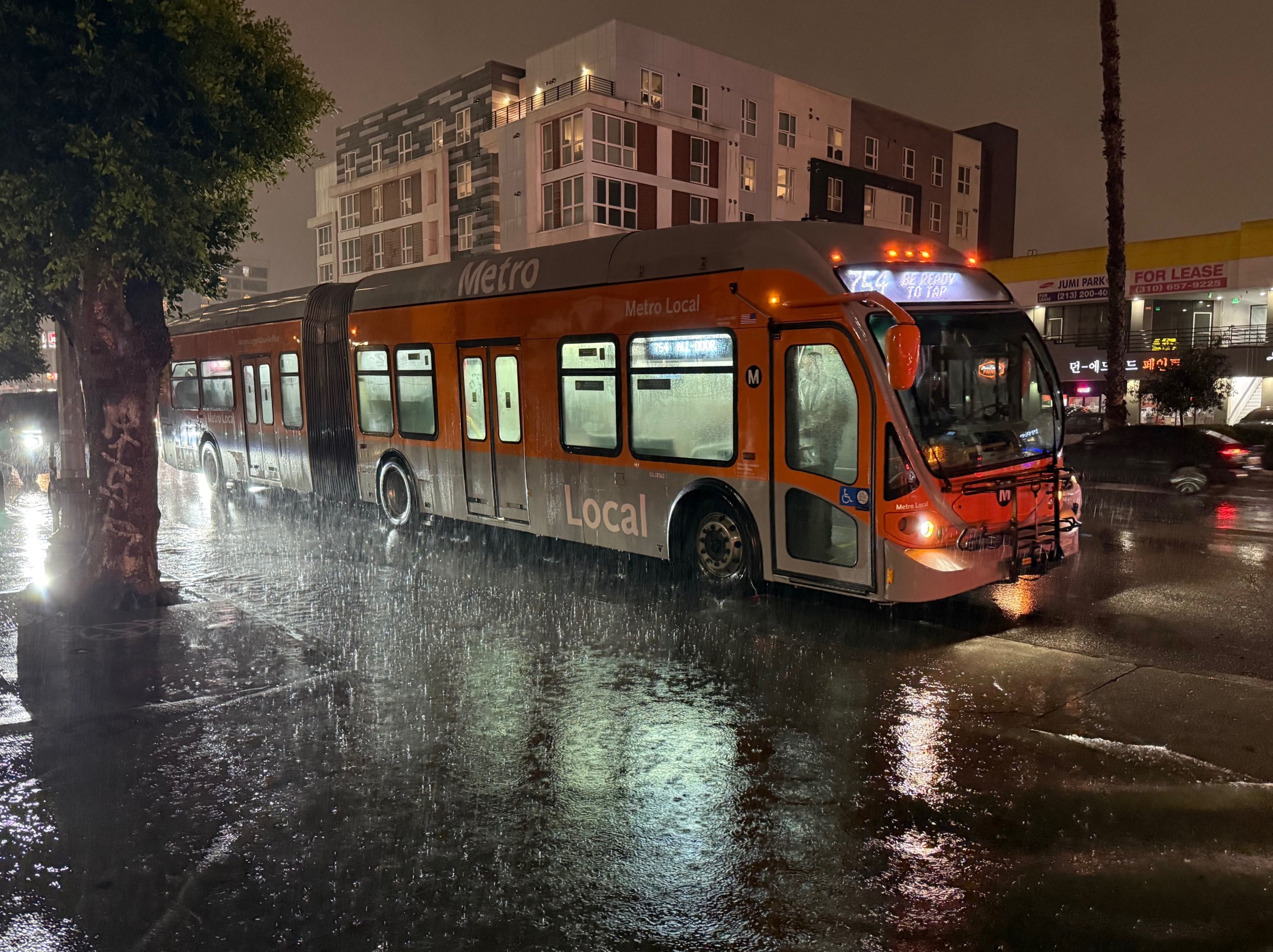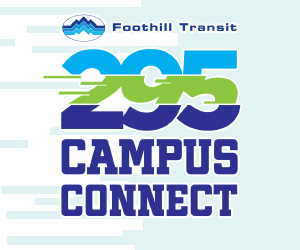
The South Bay Cities Council of Governments recently paused Metro and Caltrans plans to widen the 405 Freeway through the cities of Hawthorne, Lawndale, Redondo Beach and Torrance. The $170+million project would add about five miles of new freeways lanes, between the 105 Freeway and Artesia Boulevard.
The action is not some kind of anti-freeway revolt. "It’s very important that we strongly state that this is a critical project," wrote SBCCOG Executive Director Jacki Bacharach regarding the 405 Freeway 105/Artesia project. "We have advocated it for years."

Metro and Caltrans recently completed widening the 405 Freeway in Torrance, and are planning at least six other 405 Freeway expansion projects in the South Bay. These 405 widenings consist of at least 16 short (less than one mile) "auxiliary lane" segments. That length is just short enough to allow Metro and Caltrans to avoid a full environmental clearance process, which would require mitigation for increased driving.
The 405 Freeway 105/Artesia project appeared to gain momentum in 2023, when the Metro board approved partial funding as a match for an anticipated state/federal grant.
Per Bacharach, the construction cost is now estimated to be approximately $130 million, plus an additional $40 million for Caltrans project management. This is on top of about $17.4 million already spent on environmental and design phases.
Metro, Caltrans and the SBCCOG all want to keep widening the 405 Freeway, so why was the project paused?
It boils down to who takes responsibility for managing the project, especially who pays for cost overruns. Freeway project cost overruns have been an occasional point of contention between Caltrans and Metro.
"Metro and Caltrans were both unwilling to become the responsible fiscal agency" Bacharach noted, "so Metro was suggesting the SBCCOG take on that role."
"However, the SBCCOG does not believe it is our responsibility to fund a project of regional significance, and then to be held responsible for all cost overruns and change orders is untenable."
In recent years, the San Gabriel Valley COG has taken on construction responsibilities for some Metro/Caltrans freeway expansion projects on the 57/60 and the 605. But among the nine subregion COGs, the SGVCOG appears uniquely suited for this construction role, having managed the Alameda Corridor-East portfolio of grade separation projects. The SGVCOG's construction management success caught the attention of the adjacent Gateway Cities and their I-5 Joint Powers Authority, which (tired of Metro and Caltrans delays) are looking to contract Gateway Cities freeway design and construction work to the SGVCOG.
At their May 22 meeting, the SBCCOG Board of Directors voted to not become the fiscally responsible agency for the 405 105/Artesia project, and to notify Metro to pause the project, and de-obligate any remaining funds.
"This decision provides an important opportunity to rethink how we spend highway funds in the South Bay subregion" notes South Bay Forward Chair Brianna Egan. Egan hopes to "work with the South Bay Cities COG and its officers to identify, champion, and fund multimodal projects with significant transit, bus, rail, bike and/or micro-mobility components to connect across cities in the region and subregion."
In contrast, Bacharach and her SBCCOG plan to "continue working with Caltrans and Metro to find an alternative responsible fiscal agency for this project and the I-405/Wilmington Project in Carson."







